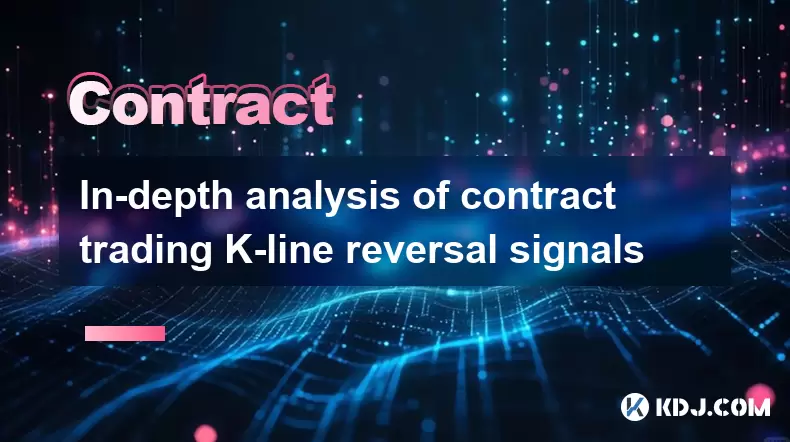-
 Bitcoin
Bitcoin $113900
-1.39% -
 Ethereum
Ethereum $3517
-4.15% -
 XRP
XRP $3.009
1.59% -
 Tether USDt
Tether USDt $0.9997
-0.04% -
 BNB
BNB $766.8
-1.41% -
 Solana
Solana $164.6
-2.38% -
 USDC
USDC $0.9998
-0.02% -
 TRON
TRON $0.3277
0.65% -
 Dogecoin
Dogecoin $0.2023
-1.67% -
 Cardano
Cardano $0.7246
0.05% -
 Hyperliquid
Hyperliquid $38.27
-4.77% -
 Sui
Sui $3.528
-0.52% -
 Stellar
Stellar $0.3890
-0.73% -
 Chainlink
Chainlink $16.16
-2.69% -
 Bitcoin Cash
Bitcoin Cash $539.9
-4.38% -
 Hedera
Hedera $0.2425
-2.00% -
 Avalanche
Avalanche $21.71
-0.97% -
 Toncoin
Toncoin $3.662
5.73% -
 Ethena USDe
Ethena USDe $1.000
-0.02% -
 UNUS SED LEO
UNUS SED LEO $8.964
0.35% -
 Litecoin
Litecoin $107.7
2.33% -
 Shiba Inu
Shiba Inu $0.00001223
-0.40% -
 Polkadot
Polkadot $3.617
-0.97% -
 Uniswap
Uniswap $9.052
-2.49% -
 Monero
Monero $295.1
-3.79% -
 Dai
Dai $0.9999
0.00% -
 Bitget Token
Bitget Token $4.315
-1.85% -
 Pepe
Pepe $0.00001060
0.11% -
 Cronos
Cronos $0.1342
-2.72% -
 Aave
Aave $256.0
-0.87%
In-depth analysis of contract trading K-line reversal signals
K-line reversal signals like hammer, shooting star, engulfing patterns, and doji are vital for predicting trend shifts in crypto contract trading.
Jun 05, 2025 at 07:35 pm

In the world of cryptocurrency trading, understanding the nuances of K-line reversal signals can significantly enhance a trader's ability to make informed decisions. Contract trading, a popular form of trading in the crypto market, involves trading contracts that derive their value from the underlying asset, such as Bitcoin or Ethereum. This article delves into an in-depth analysis of K-line reversal signals in contract trading, focusing on their identification, interpretation, and application.
Understanding K-Line Reversal Signals
K-line reversal signals are crucial indicators used by traders to predict potential shifts in market trends. These signals can be identified through specific patterns on the K-line chart, which is a type of candlestick chart commonly used in technical analysis. A K-line chart displays the open, high, low, and close prices for a given period, and the patterns formed by these lines can indicate whether a bullish or bearish trend is likely to reverse.
In contract trading, where the stakes can be high due to leverage, accurately identifying these reversal signals is paramount. Traders use these signals to enter or exit positions, aiming to capitalize on the predicted trend changes. The most common reversal signals include the hammer, shooting star, engulfing patterns, and doji.
The Hammer and Shooting Star Patterns
The hammer pattern is a bullish reversal signal that appears at the bottom of a downtrend. It is characterized by a small body at the top of the candlestick and a long lower wick, indicating that the price dropped significantly during the period but was pushed back up near the open price. This suggests that buyers are starting to outnumber sellers, potentially leading to a trend reversal.
Conversely, the shooting star pattern is a bearish reversal signal that appears at the top of an uptrend. It features a small body at the bottom of the candlestick and a long upper wick, showing that the price rose significantly but was pushed back down near the open price. This indicates that sellers are beginning to overpower buyers, which could signal an impending downtrend.
To identify these patterns in contract trading, traders should:
- Look for a hammer at the end of a downtrend, ensuring the lower wick is at least twice the length of the body.
- Identify a shooting star at the peak of an uptrend, with the upper wick being at least twice the length of the body.
Engulfing Patterns and Their Significance
Engulfing patterns are another set of powerful reversal signals. There are two types: the bullish engulfing pattern and the bearish engulfing pattern. A bullish engulfing pattern occurs when a small bearish candle is followed by a larger bullish candle that completely engulfs the body of the previous candle. This suggests that buyers have taken control, potentially reversing the downtrend.
On the other hand, a bearish engulfing pattern happens when a small bullish candle is followed by a larger bearish candle that engulfs the body of the previous candle. This indicates that sellers have gained dominance, which could lead to a reversal of the uptrend.
To effectively use engulfing patterns in contract trading, traders should:
- Confirm the presence of a downtrend before looking for a bullish engulfing pattern.
- Ensure the bullish candle's body completely engulfs the previous bearish candle's body.
- Verify an uptrend before searching for a bearish engulfing pattern.
- Check that the bearish candle's body fully engulfs the previous bullish candle's body.
The Doji and Its Role in Reversals
The doji is a unique candlestick pattern that signals indecision in the market. It is identified by a candlestick with an almost non-existent body, where the opening and closing prices are very close or identical. A doji can appear at the top or bottom of a trend and often precedes a reversal.
In contract trading, the appearance of a doji can be a critical signal for traders. A doji at the end of an uptrend suggests that buyers are losing momentum, while a doji at the end of a downtrend indicates that sellers are losing control. To use a doji effectively, traders should:
- Look for a doji at the peak of an uptrend or the trough of a downtrend.
- Confirm the doji with other technical indicators, such as the Relative Strength Index (RSI) or Moving Average Convergence Divergence (MACD).
- Consider the doji as a potential entry or exit point, depending on the subsequent candlestick.
Applying K-Line Reversal Signals in Contract Trading
Applying K-line reversal signals in contract trading requires a strategic approach. Traders should not rely solely on these signals but use them in conjunction with other technical analysis tools. Here are some steps to effectively apply these signals:
- Identify the trend: Before looking for reversal signals, ensure you have a clear understanding of the current market trend.
- Confirm the signal: Use additional indicators like RSI, MACD, or volume to confirm the validity of the reversal signal.
- Set entry and exit points: Based on the confirmed signal, set precise entry and exit points for your trades.
- Manage risk: Use stop-loss orders to manage risk, especially in the volatile world of contract trading.
Practical Example of K-Line Reversal Signal Application
Let's consider a practical example of applying a K-line reversal signal in contract trading. Suppose you are monitoring the Bitcoin perpetual futures market, and you notice a hammer pattern forming at the end of a prolonged downtrend. Here's how you might proceed:
- Identify the hammer: Confirm that the hammer appears at the end of the downtrend, with a small body and a long lower wick.
- Confirm with additional indicators: Check the RSI to see if it is oversold, indicating that the market might be due for a reversal.
- Set entry point: Decide to enter a long position at the opening of the next candle if it confirms the bullish trend.
- Set stop-loss: Place a stop-loss order below the hammer's low to manage risk.
- Monitor and adjust: Keep an eye on subsequent candles and adjust your strategy based on their behavior.
Frequently Asked Questions
Q: Can K-line reversal signals be used in all time frames for contract trading?
A: Yes, K-line reversal signals can be applied across various time frames, from short-term intraday charts to longer-term daily or weekly charts. However, the effectiveness of these signals may vary depending on the time frame and the specific market conditions.
Q: How can traders avoid false signals when using K-line reversal patterns?
A: To avoid false signals, traders should use K-line reversal patterns in conjunction with other technical indicators and consider the overall market context. It's also important to wait for confirmation from subsequent candles before making trading decisions.
Q: Are K-line reversal signals more effective in certain cryptocurrency markets?
A: The effectiveness of K-line reversal signals can vary across different cryptocurrency markets. Markets with higher liquidity and trading volume, such as Bitcoin and Ethereum, tend to provide more reliable signals due to the increased number of participants and market activity.
Q: What role does volume play in confirming K-line reversal signals?
A: Volume is a crucial factor in confirming K-line reversal signals. An increase in volume during the formation of a reversal pattern can validate the signal, indicating strong market participation and a higher likelihood of a trend reversal. Conversely, low volume may suggest a weaker signal and a potential false reversal.
Disclaimer:info@kdj.com
The information provided is not trading advice. kdj.com does not assume any responsibility for any investments made based on the information provided in this article. Cryptocurrencies are highly volatile and it is highly recommended that you invest with caution after thorough research!
If you believe that the content used on this website infringes your copyright, please contact us immediately (info@kdj.com) and we will delete it promptly.
- Solana, Axiom Exchange, and Revenue: Navigating the Future of DeFi
- 2025-08-02 12:50:12
- Cardano (ADA) and Altcoin Gains: Navigating the Crypto Landscape
- 2025-08-02 12:55:11
- Bitcoin's Bearish Momentum: Fakeout or the Real Deal?
- 2025-08-02 12:30:12
- Ethereum's Rocky Climb: Analysts Eye New ATH Despite Recent Dip
- 2025-08-02 10:30:11
- Ethereum Price, ETF Inflows, and ETH Tokens: What's Driving the Market?
- 2025-08-02 10:50:12
- Ethereum, ADA, and Price Support: What's Next for These Crypto Titans?
- 2025-08-02 10:50:12
Related knowledge

Why is my Bitstamp futures position being liquidated?
Jul 23,2025 at 11:08am
Understanding Futures Liquidation on BitstampFutures trading on Bitstamp involves borrowing funds to open leveraged positions, which amplifies both po...

How to report Bitstamp futures for taxes?
Jul 30,2025 at 08:35am
Understanding Bitstamp Futures and Taxable EventsWhen trading Bitstamp futures, it’s essential to recognize that these financial instruments are treat...

Does Bitstamp offer inverse contracts?
Jul 23,2025 at 01:28pm
Understanding Inverse Contracts in Cryptocurrency TradingIn the realm of cryptocurrency derivatives, inverse contracts are a specific type of futures ...

What is the difference between futures and perpetuals on Bitstamp?
Jul 27,2025 at 05:08am
Understanding Futures Contracts on BitstampFutures contracts on Bitstamp are financial derivatives that allow traders to speculate on the future price...

How to find your Bitstamp futures trade history?
Jul 23,2025 at 08:07am
Understanding Bitstamp and Futures Trading AvailabilityAs of the current state of Bitstamp’s service offerings, it is critical to clarify that Bitstam...

Can I use a trailing stop on Bitstamp futures?
Jul 23,2025 at 01:42pm
Understanding Trailing Stops in Cryptocurrency TradingA trailing stop is a dynamic type of stop-loss order that adjusts automatically as the price of ...

Why is my Bitstamp futures position being liquidated?
Jul 23,2025 at 11:08am
Understanding Futures Liquidation on BitstampFutures trading on Bitstamp involves borrowing funds to open leveraged positions, which amplifies both po...

How to report Bitstamp futures for taxes?
Jul 30,2025 at 08:35am
Understanding Bitstamp Futures and Taxable EventsWhen trading Bitstamp futures, it’s essential to recognize that these financial instruments are treat...

Does Bitstamp offer inverse contracts?
Jul 23,2025 at 01:28pm
Understanding Inverse Contracts in Cryptocurrency TradingIn the realm of cryptocurrency derivatives, inverse contracts are a specific type of futures ...

What is the difference between futures and perpetuals on Bitstamp?
Jul 27,2025 at 05:08am
Understanding Futures Contracts on BitstampFutures contracts on Bitstamp are financial derivatives that allow traders to speculate on the future price...

How to find your Bitstamp futures trade history?
Jul 23,2025 at 08:07am
Understanding Bitstamp and Futures Trading AvailabilityAs of the current state of Bitstamp’s service offerings, it is critical to clarify that Bitstam...

Can I use a trailing stop on Bitstamp futures?
Jul 23,2025 at 01:42pm
Understanding Trailing Stops in Cryptocurrency TradingA trailing stop is a dynamic type of stop-loss order that adjusts automatically as the price of ...
See all articles

























































































